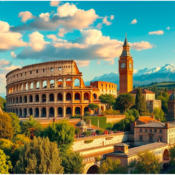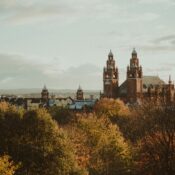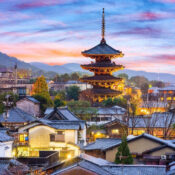15 Best Amazing Churches to Explore in Florence
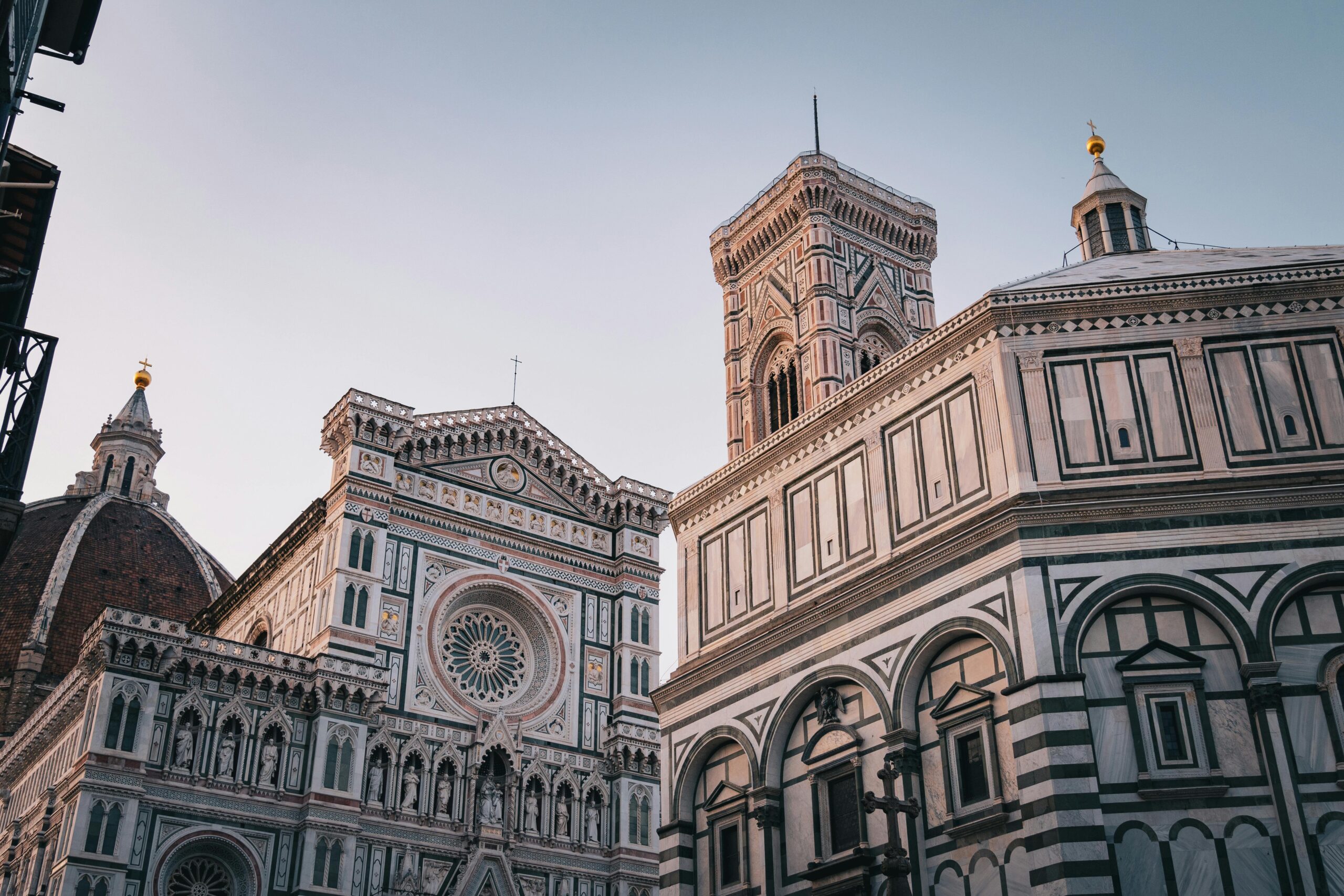
15 Best Amazing Churches to Explore in Florence
Florence cathedrals and convents are not just houses of prayer but also repositories of priceless artwork comparable to many museums. Some have even converted into civic museums and are no longer used as churches at all. Among the top tourist destinations in the city are several functioning churches. You also won’t want to leave without viewing Michelangelo’s Medici Tombs in San Lorenzo or gazing up at Brunelleschi’s enormous dome at the Cathedral of Santa Maria del Fiore.
Don’t ignore, however, any of the lesser-known churches; within are incredible examples of fresco, mosaic, stone carving, inlay, and architecture by the greatest Renaissance masters and others, who taken together have created some of the most exquisite buildings in all of Italy.
Look for the boxes along the side walls near the entrance of the chapel, where you can light the area by dropping pennies into a meter. In some churches, the main artworks are in shadowy side chapels.
With our list of Florence’s best churches, you can find out more about where to view some of the most well-known pieces of the city’s artwork.
Best Churches to Visit in Florence:
Here are the best places:
1. Cathedral of Santa Maria:
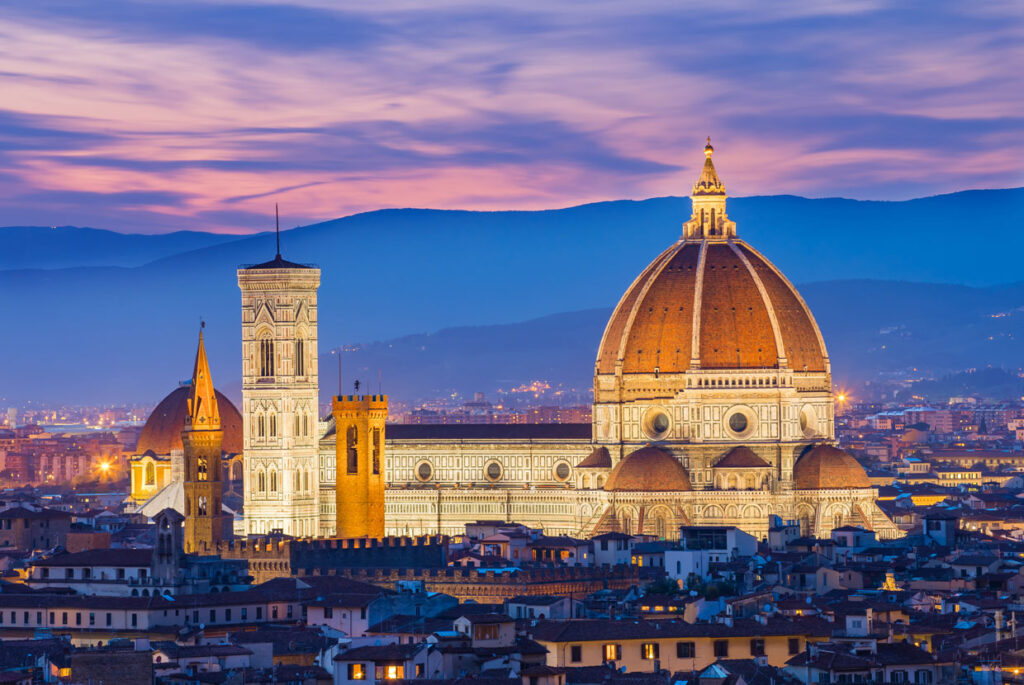
The cathedral complex in Florence, which consists of a church, baptistery, and campanile, is a gigantic architectural icon that crafted by most of the best Italian Renaissance artisans. The most well-known church in Florence is home to several masterpieces, including the spectacular dome by Brunelleschi, the elegant bell tower by Giotto, and the lovely bronze doors on the baptistery by Ghiberti.
The riches of the cathedral’s artifacts fill an entire museum, such is their abundance. There are long lineups to get in because this is Florence’s most popular attraction. With the Skip-the-Line Florence Duomo with Brunelleschi’s Dome Climb.
You may avoid them and be certain to view everything in the magnificent church, including certain areas that closed to normal visitors. The 2.5-hour guided tour includes admission to the bell tower and museum, which you can explore at your own pace, as well as a sampling of gelato.
2. Santa Maria Novella, Florence:
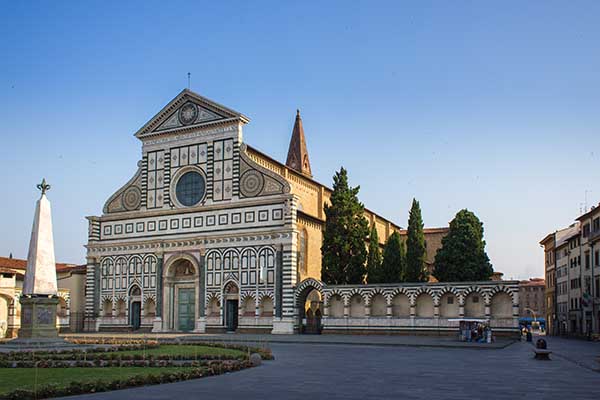
The Dominican church of Santa Maria Novella, one of Florence’s most significant structures, started in 1246 and finished more than a century later. The enormous plaza that unfolds in front of it centered around its stunning facade of inlaid colored marble, added even another century later.
Its unique shape comes from the combination of Renaissance and Romanesque-Gothic architectural styles, designed by Leon Battista Alberti. The interior combines the open concept of the Renaissance with the Gothic height, displaying aspects of both periods as well. The inside features an even greater who’s who of Florentine artists, and the rose window is the oldest in Florence.
Brunelleschi created the marble pulpit located at the second pillar in the left aisle in 1443. Among Masaccio’s best creations is the Trinity fresco on the third altar (observe the impeccable perspective).
An early Giotto, dating from around 1290, is depicting the Crucifixion scene over the door of the sacristy. Bronzino’s Christ raising the daughter of Jairus is the altar painting in the Cappella Gaddi; the renowned wooden crucifix by Brunelleschi (1410-1425) in the Cappella Gondi next door is the artist’s version of Donatello’s realistic, peasant-like Christ in Santa Croce and the first depiction of Christ without a loincloth.
3. Santa Croce,Florence:
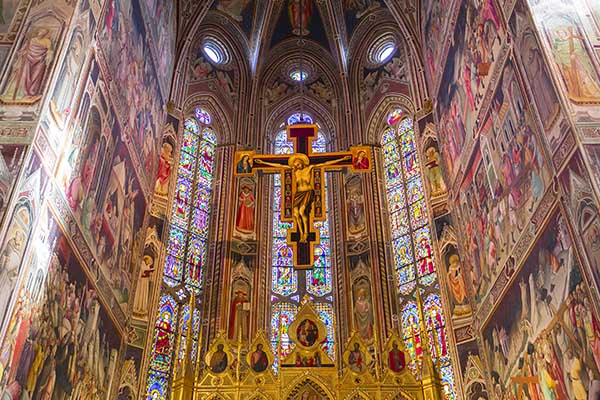
The Santa Croce Franciscan church constructed in the late 14th and early 15th centuries. And colorful marble inlay exterior added in the 1800s. Not only does it have outstanding frescoes and other artistic features, but it is also famous for being the final resting place of two of the greatest Florentine artists, Michelangelo, and Galileo.
Despite being Gothic, Santa Croce’s interior is roomier, more open, and has an exposed painted timber ceiling than other buildings from that era. To locate the main tombs, search the side aisles: As you enter the church, turn left into the north aisle to find Galileo’s and a memorial tablet that marks the resting place of Lorenzo Ghiberti, the man known for his baptistery door.
On the right are Michelangelo, Gioacchino Rossini, and Niccol Machiavelli. The final chancellor of the Florentine Republic, whose name still used to refer to cunning political strategies.
4. San Lorenzo,Florence:
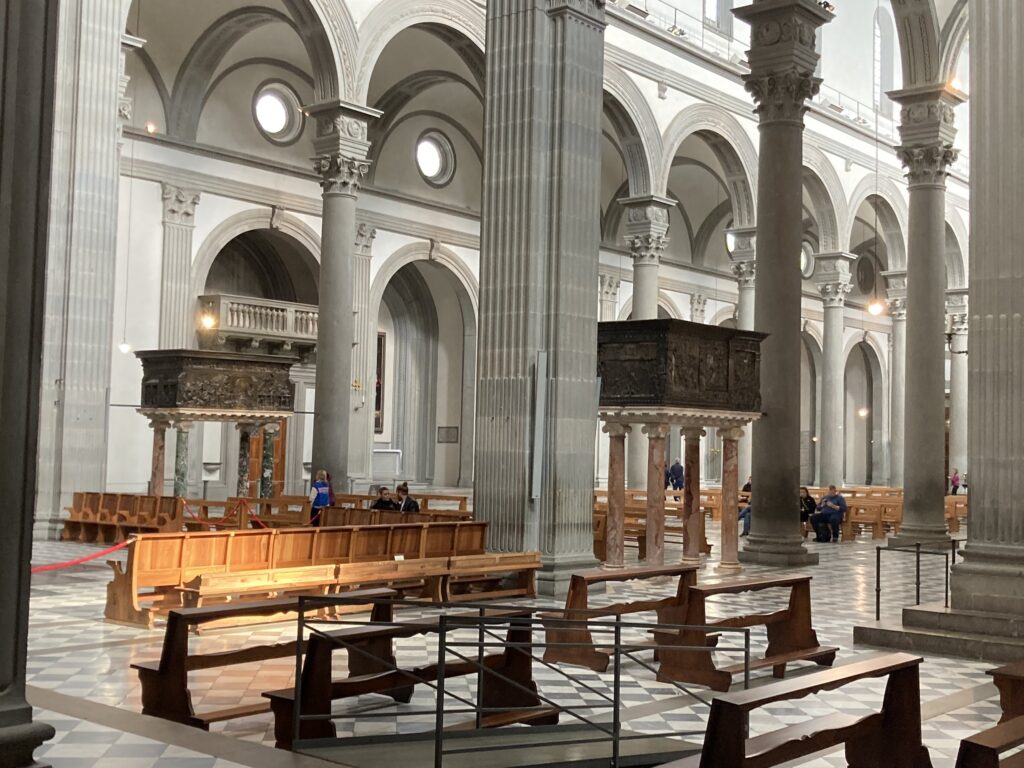
Not that the Medici family did things half-heartedly, but even they could not have imagined that their family church and mausoleum would remain regarded as one of the finest works of art in history over five centuries later. Furthermore, Michelangelo’s New Sacristy, the work’s centerpiece, never completed.
Brunelleschi achieved the pinnacle of Renaissance architectural harmony in the church itself, which Donatello, Lippi, and other masters embellished. One of the best destinations to visit in Florence is San Lorenzo because of their combined artistic talent, particularly the Medici Tombs created by Michelangelo.
5. San Miniato al Monte:
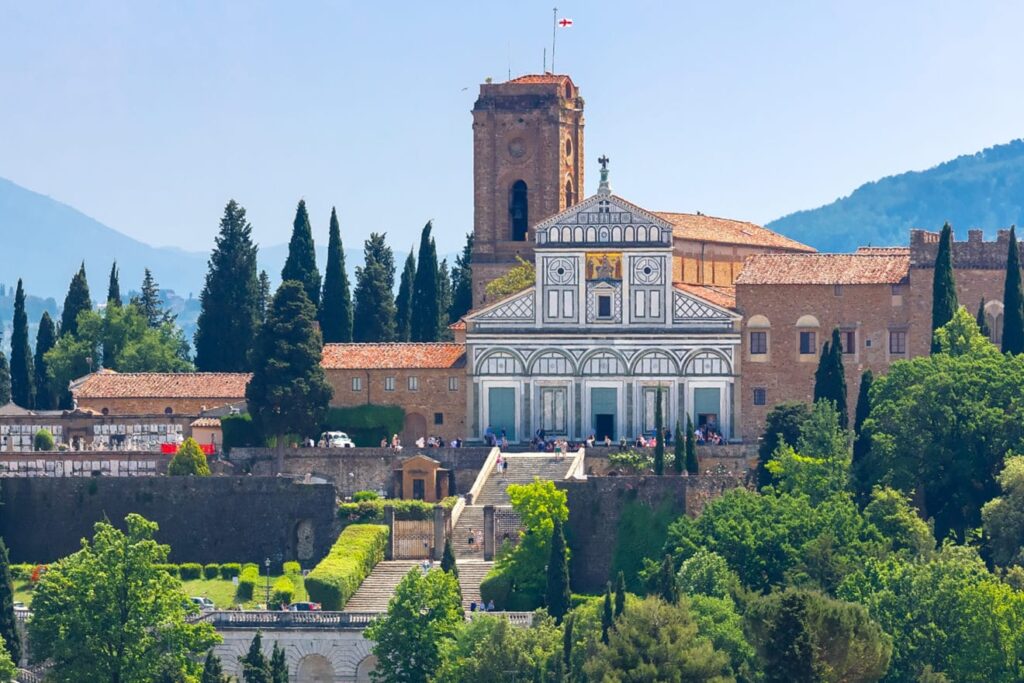
You may wonder why you should climb or take a bus to this church, located on the other side of the Arno from the many magnificent ones in Florence’s center. The church and its location above Piazzale Michelangelo, Florence’s most famous tourist destination and the best vista in the city, hold the key to the answer.
You’ll need a vacation after seeing cathedrals and museums, and the journey to San Miniato and the scenery will rekindle your passion. A sizable gold mosaic framed by an inlaid green-and-white marble façade, which unique and the first of its kind in Florence.
Other churches quickly adopted this design. With Byzantine mosaics and Classical Rome echoes in the Romanesque Tuscan architecture, you can observe how styles were already merging in the late 11th and 12th centuries.
What makes San Miniato unique is its interior design. The nave is spacious and open, with a painted wooden roof and a mosaic floor featuring zodiac designs. The choir and main altar positioned high above the nave.
Enter the Renaissance in Michelozzo’s Cappella del Crocifisso, located at the end of the nave. Where the ceiling made of glazed terracotta and features the iconic blue and white colors of Luca della Robbia. Highlights of the late Romanesque church the lavishly adorned choir screen and marble pulpit from the 12th century. As well as the mosaic in the apse that demonstrates Byzantine influence once more.
6. San Marco,Florence:
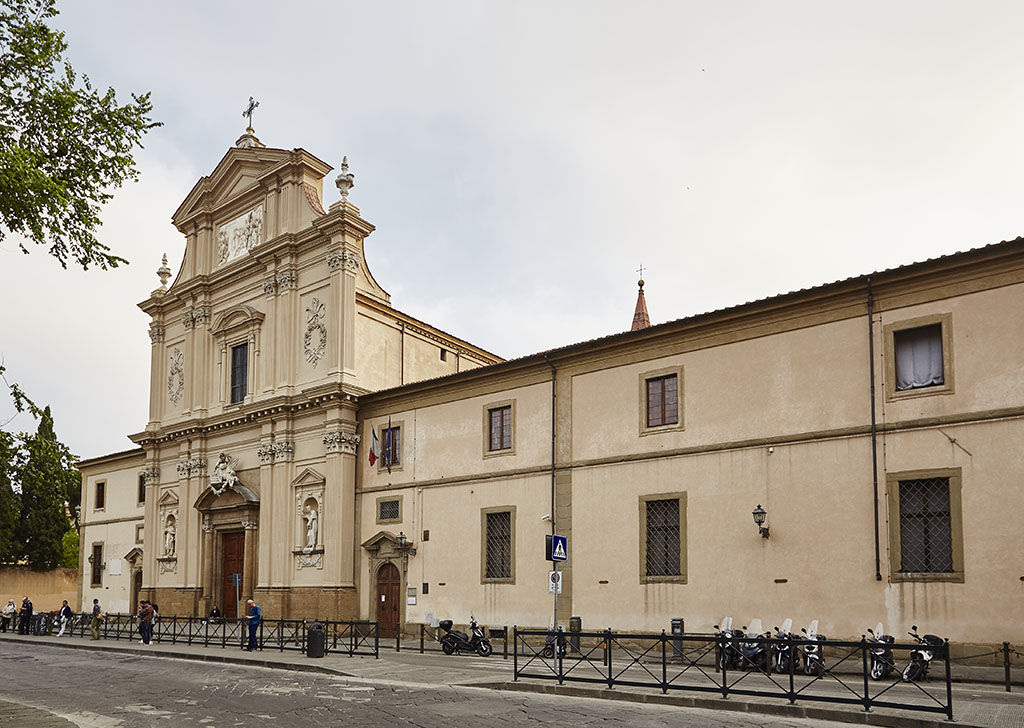
The mid-15th century architect Michelozzo entirely renovated the monastery and rebuilt the church of San Marco, which dates to 1299. In 1588, Giambologna added the Salviati Chapel, the Chapel of St. Antonino, and the side altars. The monastery is the major reason to visit San Marco, even though the church itself has some noteworthy artwork (the Byzantine mosaic Virgin in Prayer from a Rome oratory dates to 705) and the funerary chapel of St. Antony regarded as Giambologna’s principal architectural accomplishment.
The Dominican monk Fra Angelico, who painted the monastery chambers between 1436 and 1445 and left us with a “natural” museum, is largely responsible for the monastery’s notoriety. This brother, and a few others, have pieces all over the monastery, but pay particular attention to these frescoes.
Fra Angelico’s fresco, St. Dominic at the Foot of the Cross, is located directly across from the Cloister of St. Antonino entrance, while Ecce Homo is in the lunette diagonally across from the entrance.
Fra Bartolomeo’s Last Judgment housed in the Great Refectory, while his massive panel of the Madonna with St. Anne and other saints from 1510 is in the Sala dei Lavabo. Fra Angelico’s fresco The Crucifixion covers one whole wall of the chapter house. There Ghirlandaio’s renowned Last Supper in the Small Refectory.
The more than 40 monks’ cells that Fra Angelico and his pupils painted with frescoes are, however, what you will remember most. His distinctive style subtly transforms the severe rigidity of the medieval saints into kind, relatable saints who exude innocence and piety. Pay close attention to the extremely private Annunciation located across from the staircase.
7. Cappela Brancacci:
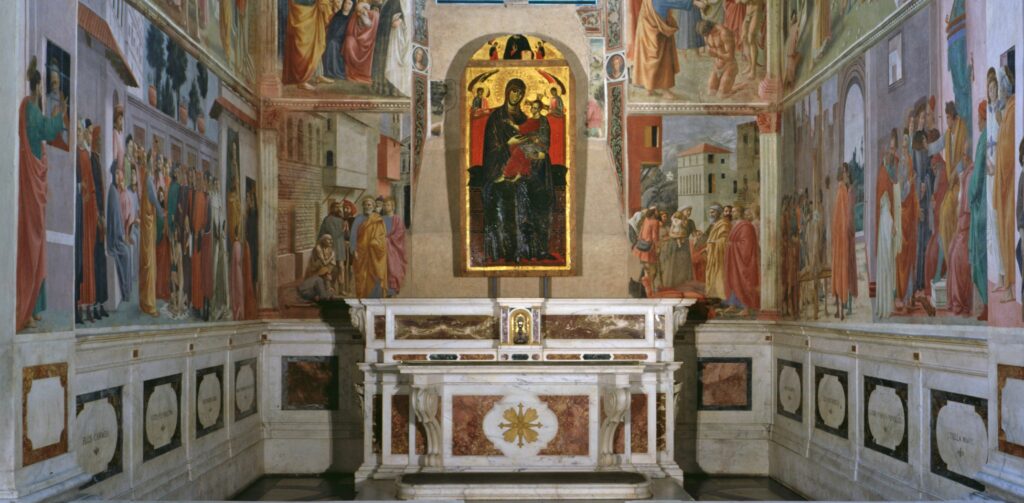
The modest, incomplete exterior of Santa Maria de Carmen conceals little hint of the riches within. Neither does the initial glimpse of its ornate Baroque interior, complete with faux-tilt ceiling and decorations. These are the outcomes of reconstruction following the interior’s destruction by fire in 1771.
Luckily, it spared the beautiful chapel that is adjoining, the Cappella Brancacci. Whose interior adorned with murals from the fifteenth century that depict episodes from the Bible and St. Peter’s life.
Designed and started by Masolino da Panicale with his student Masaccio, they finished by Filippino Lippi following Masaccio’s passing. Lately, layers of candle soot have removed, revealing vibrant hues, and highlighting the variations between the various artists’ creations.
The 15th-century Florentine painters influenced by Masaccio’s realistic rendering and use of perspective.
8. Santo Spirito,Florence:
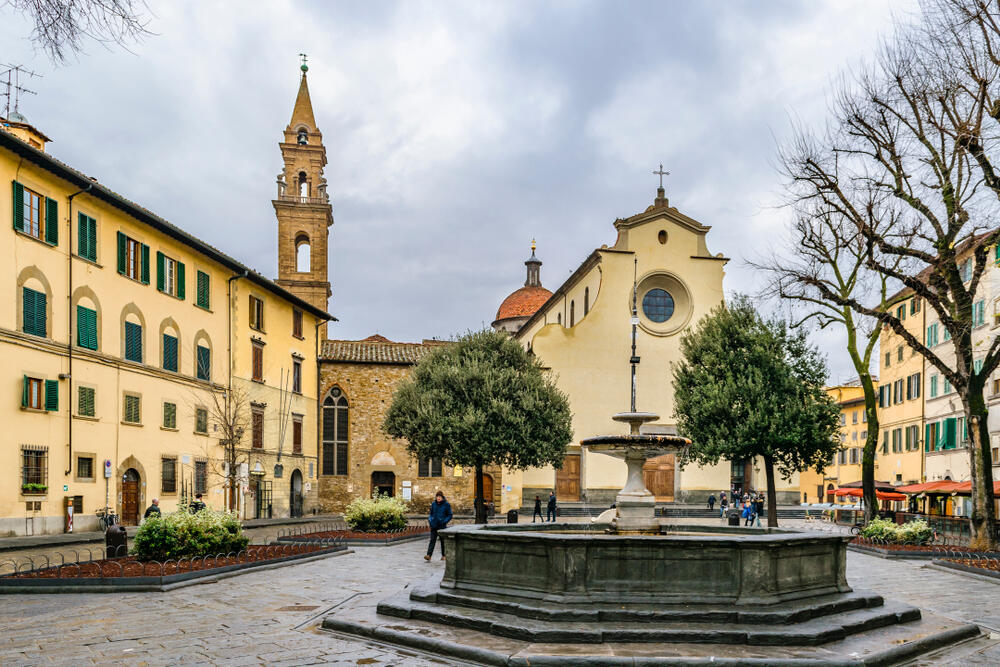
The renowned architect of Florence, Brunelleschi. Hired by several affluent Florentine families to design and construct a new church in the Oltrarno. By the time of his death in 1446, construction had advanced to the point of the vaulting.
Though not totally in accordance with his initial designs, it finished, and its austere façade belies the fact that inside is one of the purest Renaissance cathedrals. Be sure to look up at the rose window in the façade, Descent of the Holy Ghost, which created by Perugino. The side altars in the nave are a riot of paintings, statues, and reliefs.
Some of the most valuable items kept in the transept chapels. Take note of Ghirlandaio’s Ascent of Calvary and the window in the first chapel on the left arm. In the Cappella Corbinelli, which Andrea Sansovino skillfully constructed in 1492, you’ll also find his sculptures.
The most significant piece in the church is located on the right arm of the transept and is an altarpiece by Filippino Lippi from 1490 that depicts the Madonna and Child with Saints and Donors.
Caccini’s early Baroque baldachin altar is located where the transepts meet in the crossing. It exquisitely decorated with pietra dura, an elaborate mosaic of semi-precious stones that is the specialty of Florentine craftsmen.
The octagonal sacristy, a masterwork of European architecture erected by Giuliano da Sangallo in 1495. And a lovely vestibule constructed by Cronaca (1492-1494) are both accessible through the door on the left aisle.
9. Church of Annunication:
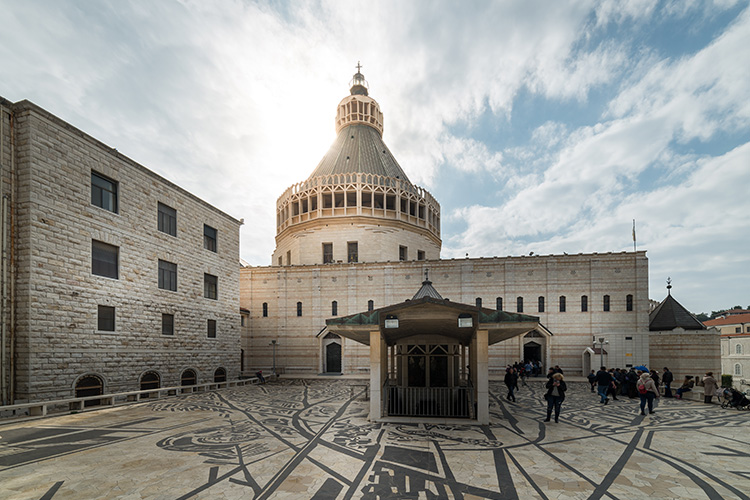
Completely reconstructed by Michelozzo between 1444 and 1481, the church regarded as his architectural achievement. And is home to some excellent pieces of art, however not everyone may be familiar with the names of the painters.
The nine chapels that make up the rotunda started in 1444 by Michelangelo and finished in a distinct style by Leon Battista Alberti. The tiny marble temple by Michelozzo near the entry on the left commissioned for the miraculous Annunciation painting (the miracle attributed to the 13th-century monk Friar Bartolomeo, who fell asleep while painting it and woke up to see that angels had finished the face of Mary).
The church had to expanded to accommodate the pilgrims who left so many votive offerings after the miracle. Even still, newlywed Florentine couples still come here to drop off the bride’s bouquet.
10. Ognissanti,Florence:
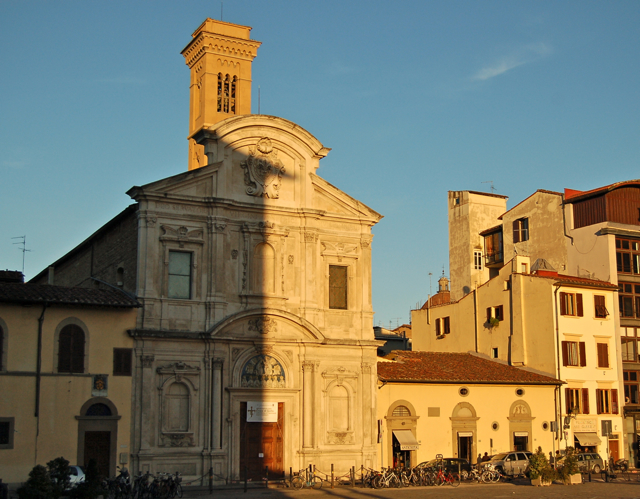
One of Florence’s earliest Baroque buildings, the church of Ognissanti originally constructed in the thirteenth century. But had extensive renovations in the sixteenth and seventeenth centuries and later restored following damage caused by the 1966 flood.
Look for the young Amerigo Vespucci, the navigator who became the namesake of two continents. Domenico Ghirlandaio’s Madonna della Misericordia (1470), at the second altar on the right. Long before his renowned career began, Ghirlandaio placed him among the parishioners pictured in here, his family’s local church.
The sacristy has a Taddeo Gaddi fresco depicting the Crucifixion and a woodwork of Christ Crucified in the Giotto style. View episodes from St. Francis’s life depicted in 17th-century murals when you enter the cloister through the transept. The Cenacolo del Ghirlandaio, a refectory featuring a full-length mural of Ghirlandaio’s Last Supper, is located beyond. Sandro Botticelli’s well-known Saint Augustine at Study and Ghirlandaio’s St. Jerome in his Chamber (1480) also depicted here.
Also Read: Best Places to Visit in Italy
11. San Michele:
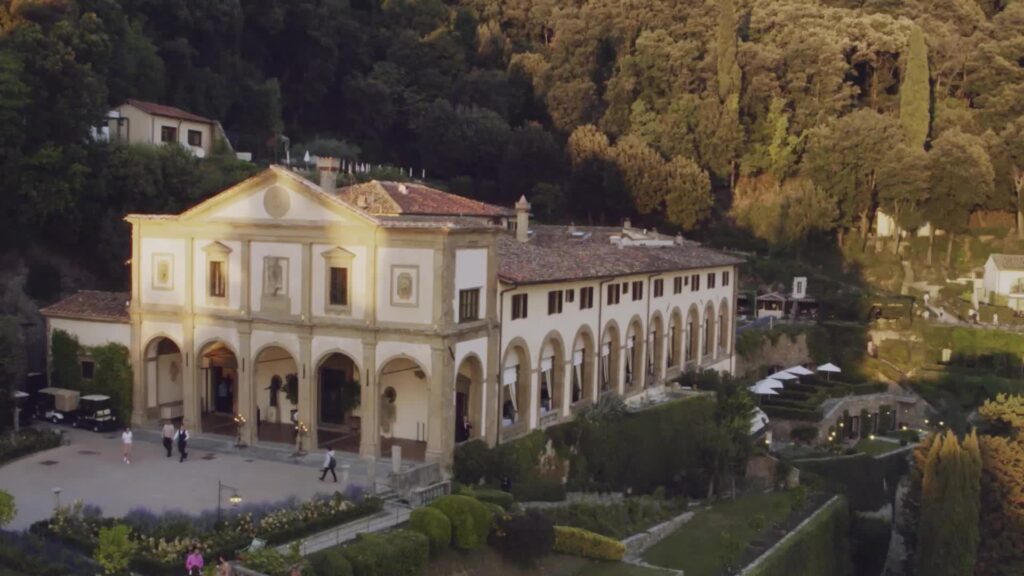
An oratory and a grain trade hall with a miraculous painting that drew more devotees than purchasers gave rise to this well-preserved 14th-century edifice.
As a result, the building’s religious significance took precedence in the late 14th century. And it was converted into a church known as Orsanmichele.
Some of its most well-known artwork is shown externally. Take a stroll around it before going inside to appreciate the intricate stonework in the window niches and arches that define its architecture. The earliest large bronze Renaissance statue, Lorenzo Ghiberti’s St. John the Baptist (c. 1414).
Located on the left side of the Via dei Calzaiuoli. Giambologna’s (1600) St. Luke and Andrea del Verrocchio’s important work, Incredulity of St. Thomas, are in the next niche (by Donatello) on the right.
Donatello’s early St. Mark is located on the south side of the Via dei Lamberti, while Lorenzo Ghiberti’s St. Matthew (1419–1422) and his St. Stephen are located on the west facade. Donatello’s St. Peter is on the north side. The artwork, stained glass windows, and frescoes within make the interior worth seeing. The renowned Gothic marble tabernacle of Orcagna. Which dates from 1349 to 1359 and houses the miraculous 1347 image of the Madonna by Bernardo Daddi, marks the conclusion of the right-hand nave.
12. Sant Ambrogio,Florence:

Sant’Ambrogio, one of the oldest churches still standing in Florence, was constructed before the year 1000 in remembrance of St. Ambrose, a Milanese bishop from the fourth century. Constructed on the spot where the saint resided during his journey to Florence, the church holds religious importance as the location of two miraculous healings involving the Eucharist. The first, which occurred in 1230, was taken to support the transubstantiation teaching, which the church had only recently come to acknowledge.
The Holy Sacrament Tabernacle from the 15th century, which houses the blood that appeared in the chalice miraculously as the priest was celebrating Mass, is housed in the Cappella del Miracolo. Cosimo Roselli painted the chapel walls with frescoes from the fifteenth century, and Mino da Fiesole created the reliquary. A painted terra-cotta tabernacle depicting St. Ambrose in benediction is located outside the church.
The church is filled with frescoes and other artwork by master Florentine artists such as Fra Bartolomeo, Giovanni della Robbia, Agnolo Gaddi, Masaccio, Filippo Lippi, Sandro Botticelli, and others. Midway through the 15th century, Filippo Lippi painted “Incoronation of the Virgin,” which is currently housed in the Uffizi Gallery, for the church’s main altar.
13. Santa Trinita:
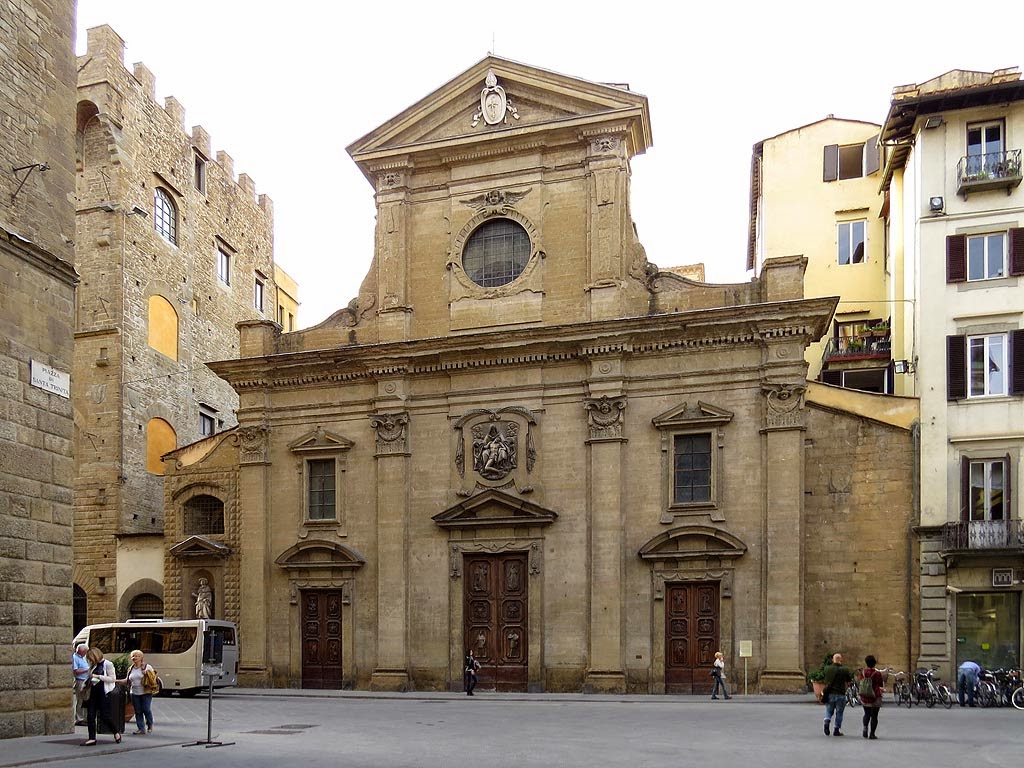
This ancient church, which dates to the 11th century. Reconstructed as Florence’s first Gothic church in the 13th century (perhaps by Niccolò Pisano). is particularly beloved by the city’s residents. The late 16th-century front was created by Buontalenti, and it was renovated once again in the late 14th century.
Along with some exceptional pieces, you may view a superb specimen of Florentine Gothic art from the fourteenth century inside. The most notable of these is the Cappella Sassetti, located in the transept’s right arm, where Domenico Ghirlandaio’s (1483–1486) murals depicting St. Francis’ life may be found. The most well-known of them is Confirmation of the Rule of the Order, in which Ghirlandaio himself, Lorenzo the Magnificent, the Piazza della Signoria, and the Piazza della Trinità are among the modern figures and structures that the artist has included.
Ghirlandaio also created the altarpiece Adoration of the Shepherds in 1485. One of the best-known marble tombs designed by Luca della Robbia is in the left arm of the transept and honors Bishop Benozzo Federighi.
14. Sant Appollonia:
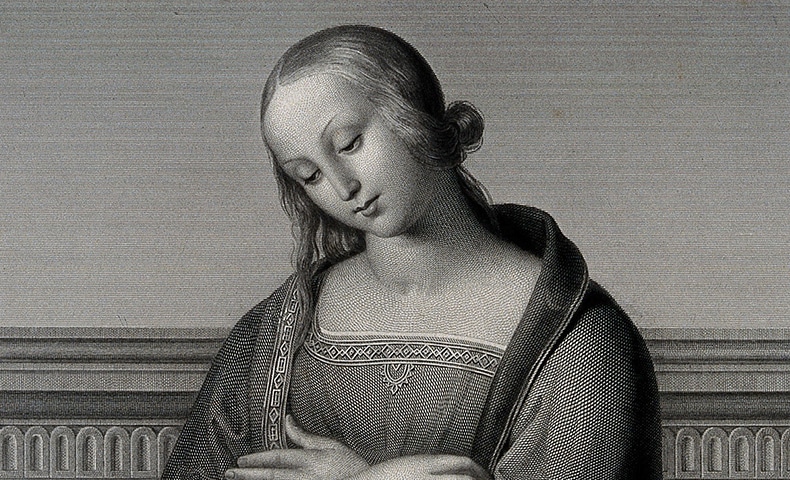
See the gorgeous cloister and the refectory containing Andrea del Castagno’s Last Supper by paying a visit to this former monastery, which is now a part of the university. This fresco, which was painted somewhere about 1457, is significant to Renaissance art. Castagno was one of the first to capture the physical drama of a scene as well as attain precise perspective.
Above it is the Crucifixion, Entombment, and Resurrection by Castagno, together with his two lunettes, Pietà and Christ Crucified with the Virgin, Saint John, and Saints, which were uncovered under layers of whitewash during the secularization of the convent buildings.
15. Sant Apostoli:
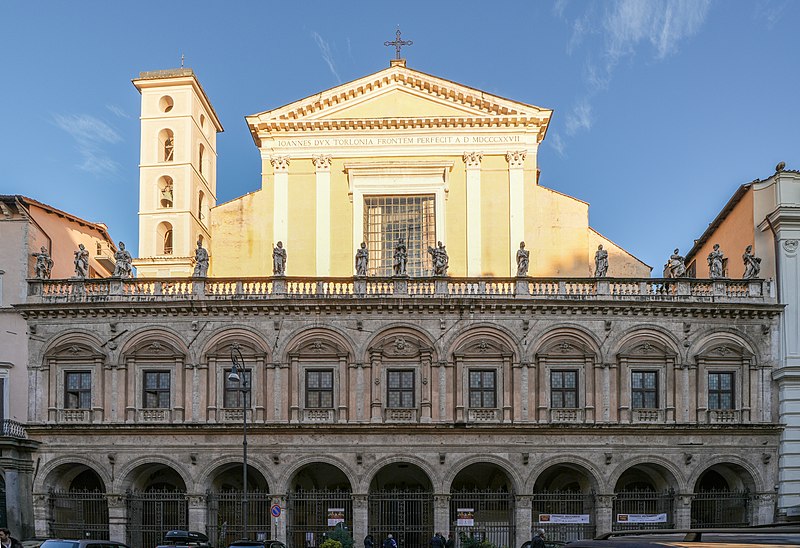
The Church of the Holy Apostles is worth seeing because of the large terra-cotta tabernacle by Giovanni della Robbia in the left aisle and a panel of the Immaculate Conception by Vasari (1541) in the third chapel of the right aisle, even though this church and its artwork suffered significant damage in the 1966 floods. The first two composite capitals on the columns made of green marble are assumed to have come from the adjacent Roman baths.
This is one of Florence’s best-preserved examples of a Romanesque church, thanks to Michelangelo. He is reported to have persuaded the architect to limit his adjustments and leave the basic structure intact when churches were being “modernized” in the fifteenth century.
Treasures of the church include the “Pietre del Santo Sepolcro,” which was delivered to Florence in 1101 by a returning crusader, in addition to the della Robbia tabernacle and the Vasari panel. It is thought that the stones were struck in order to ignite the lighting within Jesus’s tomb.
Click here to know more.
For more information, vist our website Travel India Info to plan your upcoming trip, or mail us at info@travelindiainfo.com. We will be happy to assist you. Happy Travelling!!
Recent Posts
Europe Travel Guide: Best Places to Visit & Explore
15 Best Amazing Places to Explore in Scotland
9 Best Amazing Day Trip To Explore from Kyoto


